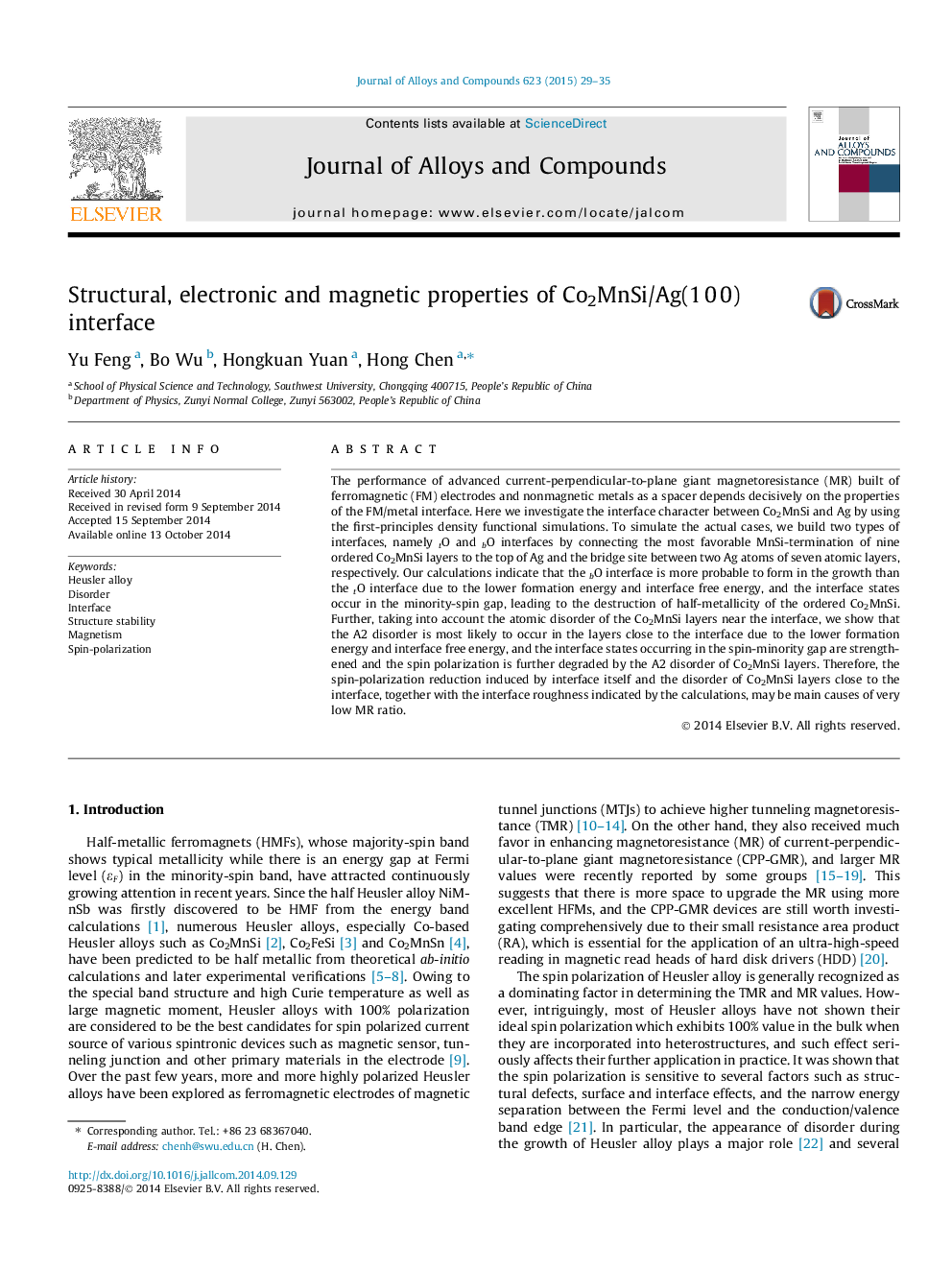| Article ID | Journal | Published Year | Pages | File Type |
|---|---|---|---|---|
| 7999757 | Journal of Alloys and Compounds | 2015 | 7 Pages |
Abstract
The performance of advanced current-perpendicular-to-plane giant magnetoresistance (MR) built of ferromagnetic (FM) electrodes and nonmagnetic metals as a spacer depends decisively on the properties of the FM/metal interface. Here we investigate the interface character between Co2MnSi and Ag by using the first-principles density functional simulations. To simulate the actual cases, we build two types of interfaces, namely tO and bO interfaces by connecting the most favorable MnSi-termination of nine ordered Co2MnSi layers to the top of Ag and the bridge site between two Ag atoms of seven atomic layers, respectively. Our calculations indicate that the bO interface is more probable to form in the growth than the tO interface due to the lower formation energy and interface free energy, and the interface states occur in the minority-spin gap, leading to the destruction of half-metallicity of the ordered Co2MnSi. Further, taking into account the atomic disorder of the Co2MnSi layers near the interface, we show that the A2 disorder is most likely to occur in the layers close to the interface due to the lower formation energy and interface free energy, and the interface states occurring in the spin-minority gap are strengthened and the spin polarization is further degraded by the A2 disorder of Co2MnSi layers. Therefore, the spin-polarization reduction induced by interface itself and the disorder of Co2MnSi layers close to the interface, together with the interface roughness indicated by the calculations, may be main causes of very low MR ratio.
Related Topics
Physical Sciences and Engineering
Materials Science
Metals and Alloys
Authors
Yu Feng, Bo Wu, Hongkuan Yuan, Hong Chen,
